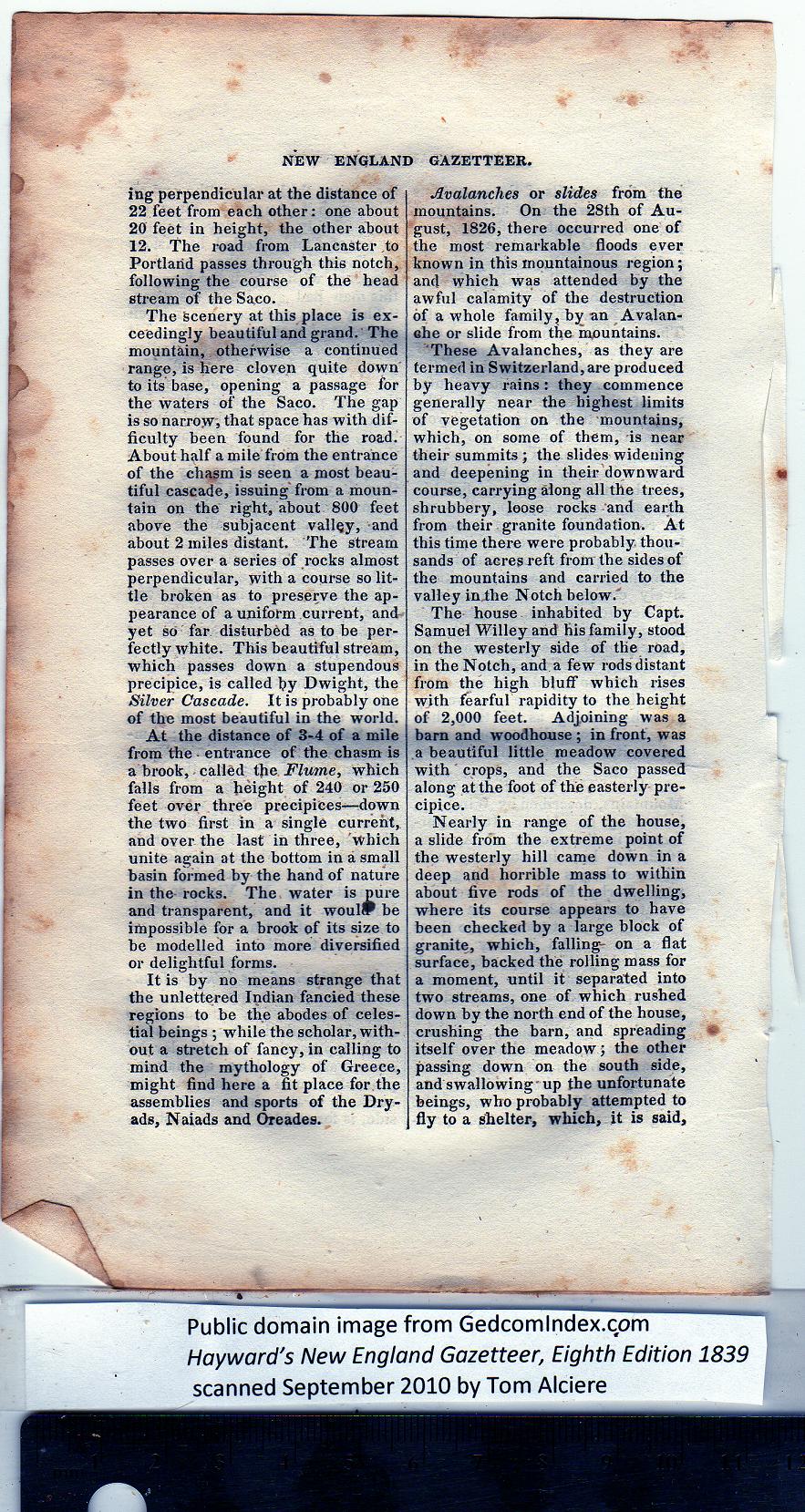|
ing perpendicular at the distance of
22 feet from each other: one about
20 feet in height, the other about
12. The road from Lancaster to
Portland passes through this notch,
following the course of the head
stream of the Saco.
The Scenery at this place is ex-
ceedingly beautiful and grand. The
mountain, otherwise a continued
range, is here cloven quite down
to its base, opening a passage for
the waters of the Saco. The gap
is so narrow, that space has with dif-
ficulty been found for the road.
About half a mile from the entrance
of the chasm is seen a most beau-
tiful cascade, issuing from a moun-
tain on the right, about 800 feet
above the subjacent valley, and
about 2 miles distant. The stream
passes over a series of rocks almost
perpendicular, with a course so lit-
tle broken as to preserve the ap-
pearance of a uniform current, and
yet so far. disturbed as to be per-
fectly white. This beautiful stream,
which passes down a stupendous
precipice, is called by Dwight, the
Silver Cascade. It is probably one
of the most beautiful in the world.
At the distance of 3-4 of a mile
from the • entrance of the chasm is
a brook, called the Flume, which
falls from a height of 240 or 250
feet over three precipices—down
the two first in a single current,
and over the last in three, which
unite again at the bottom in a small
basin formed by the hand of nature
in the rocks. The water is pure
and transparent, and it woulP be
impossible for a brook of its size to
he modelled into more diversified
or delightful forms.
It is by no means strange that
the unlettered Indian fancied these
regions to be the abodes of celes-
tial beings ; while the scholar, with-
out a stretch of fancy, in calling to
mind the mythology of Greece,
might find here a fit place for the
assemblies and sports of the Dry-
ads, Naiads and Oreades. |
Avalanches or slides from the
mountains. On the 28th of Au-
gust, 1826, there occurred one of
the most remarkable floods ever
known in this mountainous region;
and which was attended by the
awful calamity of the destruction
of a whole family, by an Avalan-
che or slide from the mountains.
These Avalanches, as they are
termed in Switzerland, are produced
by heavy rains: they commence
generally near the highest limits
of vegetation on the mountains,
which, on some of them, is near
their summits; the slides widening
and deepening in their downward
course, carrying along all the trees,
shrubbery, loose rocks and earth
from their granite foundation. At
this time there were probably thou-
sands of acres reft from the sides of
the mountains and carried to the
valley inihe Notch below.
The house inhabited by Capt.
Samuel Willey and his family, stood
on the westerly side of the road,
in the Notch, and. a few rods distant
from the high bluff which rises
with fearful rapidity to the height
of 2,000 feet. Adjoining was a
barn and woodhouse; in front, was
a beautiful little meadow covered
with crops, and the Saco passed
along at the foot of the easterly pre-
cipice.
Nearly in range of the house,
a slide from the extreme point of
the westerly hill came down in a
deep and horrible mass to within
about five rods of the dwelling,
where its course appears to have
been checked by a large block of
granite, which, falling- on a flat
surface, backed the rolling mass for
a moment, until it separated into
two streams, one of which rushed
down by the north end of the house,
crushing the barn, and spreading
itself over the meadow; the other
passing down on the south side,
and swallowing'up the unfortunate
beings, who probably attempted to
fly to a shelter, which, it is said, |
